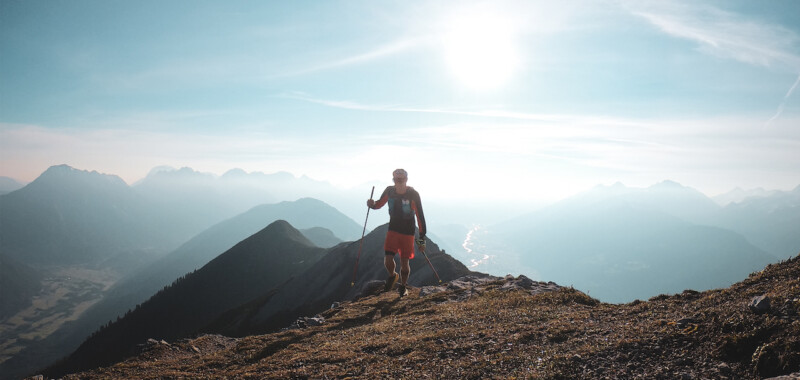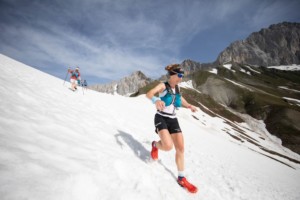If ultrarunners talk about running they are stepping onto a slippery slope. What they consider normal is utterly insane or outright impossible for people who enjoy their casual 5k in the park every other week. Still, there is a whole scene of longdistance runners who spend countless hours running through nature. What motivates trail- and ultrarunners? Dr. Carl Morriss set out to shed some light on this peculiar species with substantive scientific research: the Ultra Trail Project. We met Carl for a deep-dive into its findings.
We all know a lot about Trailrunning, Ultrarunning, and its community, right? But what do we really know – and what are just subjective impressions? What is anecdotal “knowledge” and what are hard, scientific facts? Even the most informed lack hard evidence when it comes to knowing “the trailrunners”, their culture and their habits as a group.
Carl Morris from the University of Central Lancashire waned to change this and designed a massive survey along scientific standards for runners from the USA and UK. He called this the Ultra Trail Project and received more than a thousand answers and conducted dozens of interviews to find out more about the motivations, the backgrounds, and the hopes and fears of trail- and ultrarunners. Based on his findings, we now know that the average runner runs about 50 kilometers per week and owns five pairs of running shoes. But this is only chitchat. What the real insights are, Carl explains in his interview with XC-RUN.de.
The survey ran for a period of six months, between April and September 2022, and received more than 1,000 answers – predominantly from the USA and UK. What did you aim to find out with this substantive survey?
Something like this has never been done before. We were working from the ground up and wanted to understand the community in a very broad sense. Therefore, we wanted to:
- create a good set of demographic data to find out who trail- and lack ultrarunners are. As runners, we all have our own anecdotal sense of what the community looks like, but there isn’t much in the way of official data.
- understand how runners engage with the sport. It was important that the survey include questions on areas relating to training, racing, media consumption, volunteering, values relating to the sport, personal motivations.
The trailrunning and ultrarunning scenes have been experiencing major changes for years, now. The market is massively growing, events become more professional, live broadcasting becomes the new normal, and brands are investing considerable money. Due to your survey, how does the community react to these developments?
This is quite a complicated question, but the survey does highlight a couple of points that are fascinating – such as that the sport is still quite fragmented. For example, UTMB was considered to be the most ‘inspiring race’, but this still only amounted to around 10-15% of respondents. Overall, there were around 200 different races that were selected by participants in answer to this question. Similarly with media, there were a handful of popular media outlets, but in total nearly 300 examples of media were chosen by different survey respondents. The same holds true for ‘inspiring athletes’. There were around 200 names in response to this question. This all suggests that despite the chatter about monopolies and professionalization in the sport, fundamentally it does still possess a certain degree of grassroots diversity.
In terms of the commercialization and professionalization of the sport, overall respondents seemed to be broadly okay with this. For example, only 1.5% of respondents are opposed to salaries and sponsorship for elite athletes. There will be a great deal of nuance in these views – which is something we’re exploring with further research – but early indications seem to be that most trail- and ultrarunners are happy enough with the trajectory of the sport.
Is trail- and ultrarunning still an underground phenomenon or did it already break into the major market of established sports?
Right now, I would argue that the sport is finely balanced between being an underground vs mainstream sport, much like skateboarding was in the mid-1990s, or rock climbing in the early to mid-2000s. As with all of these things, you just need to look at what the big apparel companies are doing. It is significant that eg. the lifestyle brand Lululemon has entered the trailrunning market in recent years, including a recent sponsorship deal for Camille Heron. This suggests that trailrunning is having a cultural impact beyond a small group of dedicated runners and is instead becoming mainstream among a more casual group of runners and outdoor enthusiasts.
„I fully expect ‘trail-chic’ to become a phenomenon over the next few years in the same way that yoga fashion has been over the last decade.“
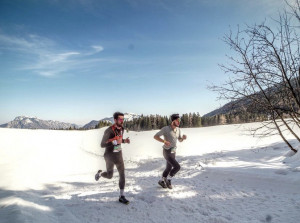
There is of course also a massive growth in the sub-ultra world of trailrunning, with less competitive ‘fun run-style’ events springing up everywhere. More work needs to be done on this, but these events seem to appeal to casual road runners who want to try something a little different. Most likely what we’ll see in time is a much closer alignment and overlap between the mass market of road running and what has previously been a sub-culture of trail- and ultrarunning.
Looking towards the future, the sport is definitely changing and becoming more mainstream.
Although money is becoming a major factor in our sport, it’s hard for media to cash in as well. Paid magazines or on-demand videos are hardly attractive as the survey found out. Why? The average runner has a high income and strong identification with the sport – as you just found out as well.
An enormous collection of digital media content is consumed by runners – but this is mostly ‘free’ YouTube videos, podcasts, and websites. The challenge for professional media outlets is working out how to monetize their content – why would an audience be expected to take out a magazine subscription, for example, when they can get similar content at no cost on the internet? Trail- and ultrarunning media is responding to this in different ways. At the moment, it seems to take three forms.
- Large multi-media subscription packages
- Trying to build up a loyal community that is willing to sign-up for media content that is also linked to other features, such as training plans, discord groups etc.
- ‘Free at the point of use’ media that relies on advertising and sponsored revenue.
There are commercial models out there for media, but it is challenging, and it does require a lot of creativity.
For many runners, being in nature, and running for and with themselves have therapeutic effects. The survey seems to corroborate this impression as more runners are feeling mentally healthy and balanced than in the general median of the US and the UK. Do you agree – and can we derive from the data that running in nature is actually good for our mental balance and mental strength?
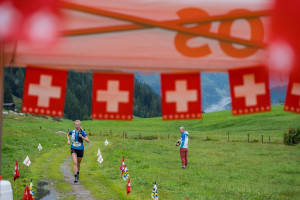
„The trick now will be taking that finding to see whether trailrunning can be brought to people who don’t already do it, perhaps as therapeutic treatment for people with problems relating to anxiety, depression or trauma.“
Did anything in the survey results make you nervous or worried?
Possibly the most glaring problem that the survey highlighted is the lack of racial diversity in the sport. We already knew this anyway – all you need to do is line up at the start of a race. But there was not a single Black/African-American/Black British respondent to the survey. Not one! This really highlighted that the sport has some inroads to make.
Although not directly related to the survey, another concern I have is with the growth of the sport. It is fantastic that more and more people are getting involved, but it would be a shame if it were to become too mainstream and possibly lose the countercultural, slightly anarchic spirit, that has traditionally been a feature of the sport.
„This is the challenge: to invite people in but retain the very things that make it so special.“
Will the collection of data be continued in the future, and will there be an opportunity to include data from German speaking countries?
Yes. We’re hoping to run the survey every two years, so that we can track change overtime but also add new and interesting questions as the sport develops. Our plan is also to look at doing work in Europe, including finding a way to have versions of the survey that will be accessible in other languages, including for German speakers. So watch XC-RUN.de for 2024!
You are planning a book release as well. Can you give us a brief synopsis of the content and the release plan?
I’m currently writing a book that examines the history of trail- and ultrarunning from the 19th century through to the modern sport. Roughly two thirds of the book will look at this history and the final third will examine the modern sport. I’m interested in examining ideas of professionalism vs amateurism, the commercial and economic aspects of the sport, diversity within the sport, and a whole range of other topical issues. Telling a story that examines the whole historical arc helps us to understand the modern sport. I’m making good progress and the book should be out for release in 2024.
You are a Lecturer in Religion, Culture and Society at the School of Humanities, Language & Global Studies, University of Central Lancashire. And you are an avid runner yourself. What have your running highlights been so far and are there plans for 2023?
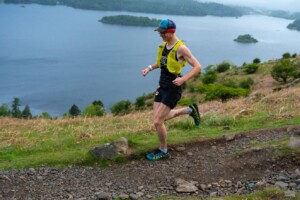
On running, my highlights include a solo Bob Graham round attempt and the Winter Spine Challenge earlier this year. I enjoy very long runs over technical terrain, usually in miserable conditions! I’m racing the 100-mile Ultra Trail Snowdonia this year, with plans to hopefully qualify through the lottery for UTMB in the next year or two – racing in the Alps is definitely at the top of my running goals at the moment.
(The entire survey, its design and most of all its results are available here.)
Similar articles:
